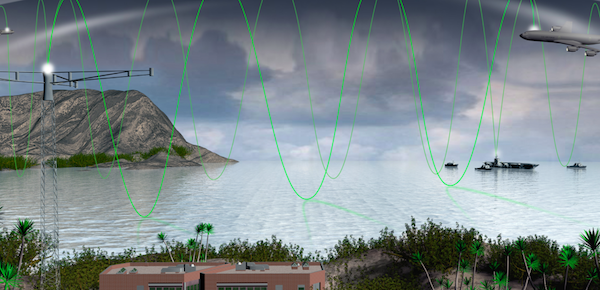By Thaddeus Zeglen
It’s ancient, hard to use, has limited bandwidth and requires huge black boxes. Its reliability and throughput issues make it greatly inferior to SATCOM for data communications. When you’re talking about high-frequency (HF) communications, you’re also talking about low expectations.
These are typical associations with HF technology in the age of SATCOM – so it might surprise you to learn that HF technology has come a long way since its inception in the 1930s. Modernized HF, particularly Wideband HF (WBHF), has undergone a transformation that makes it a formidable technology for the modern communication needs of both military and commercial users.
WBHF – way beyond HF
Not only does modern WBHF rival the reliability and throughput of narrowband SATCOM, it also strengthens the security of your overall communications system by doing one thing SATCOM can’t: enabling forces to maintain their critical communications network even in a satellite-denied environment.
WBHF operating costs are a fraction of those associated with a SATCOM system. In fact, even with its significant advancements, WBHF has managed to keep its costs in line with legacy HF systems.
Achieving such advancements in HF technology first required a belief in its potential. Rockwell Collins had that and set about developing a line of modernized WBHF products that also would fully develop the technology’s best capabilities.
Rockwell Collins has provided HF technology development and consultation for defence customers in Canada, Australia, Brazil, South Africa and elsewhere. Our HF systems are part of NATO military HF networks.
Working with WBHF is a natural fit for Rockwell Collins. Our long-term expertise in HF is globally recognized. Rockwell Collins has been working with the High Frequency Industry Association and Military Standards (Mil Std) Technical Advisory Committee to draft military standards for WBHF for both fourth-generation (4G) Automatic Link Establishment (ALE) and 48 kHz WF.
To date, we have invested several million dollars in the development of a WBHF product line in our Ottawa facilities, which are part of Rockwell Collins Canada. We continue to invest in bringing next-generation HF capability to international military and commercial customers.
The advantages of a WBHF radio
The lead product in Rockwell Collins’ ground, fixed-site WBHF line is the RT-2200A wideband HF radio. This reliable, software-defined radio combines high-quality voice and high-speed data communications capability with very low operating costs. Among its features:
- Provides modernized, Beyond Line of Sight (BLoS) digital communications in ground fixed-site, transportable shelter and maritime applications;
- Can leverage Rockwell Collins SubNet Relay technology to provide ad hoc, dynamically reconfigurable, master-less Internet Protocol (IP)-based data communications return;
- Streams live video and transmits images, email and chat communications both inter- and intra-theatre, all with high-assurance data security;
- Enables networking, remote control and split-site operability;
- Operates in an Anti-Access/Area-Denial (A2AD) environment where satellite communications may not be available;
- Interoperates with legacy HF systems (e.g., the RT-2200A is a drop-in upgrade for the legacy RT-2200 HF narrowband radio) and existing digital networks.
The combination of intuitive touch screen, web-based controls and the use of 4G ALE to automatically seek and link with the best available channel makes the RT-2200A extremely easy to use. In addition to choosing the optimal channel, 4G ALE also selects frequency, bandwidth/offset and data rate.
Globally applied, Canadian made
Rockwell Collins Canada’s locally developed next-generation WBHF technology is a highly effective, low-cost choice for much more than defence operations. It has applications in natural resource exploration, remote community networking, search-and-rescue operations, embassy networking and any commercial application requiring BLoS networking and data transfer.
If you haven’t looked at HF in a while, it might be time to look again.
For more information about Rockwell Collins, go here.
Thaddeus Zeglen is a Principal Marketing Manager at Rockwell Collins Canada.
